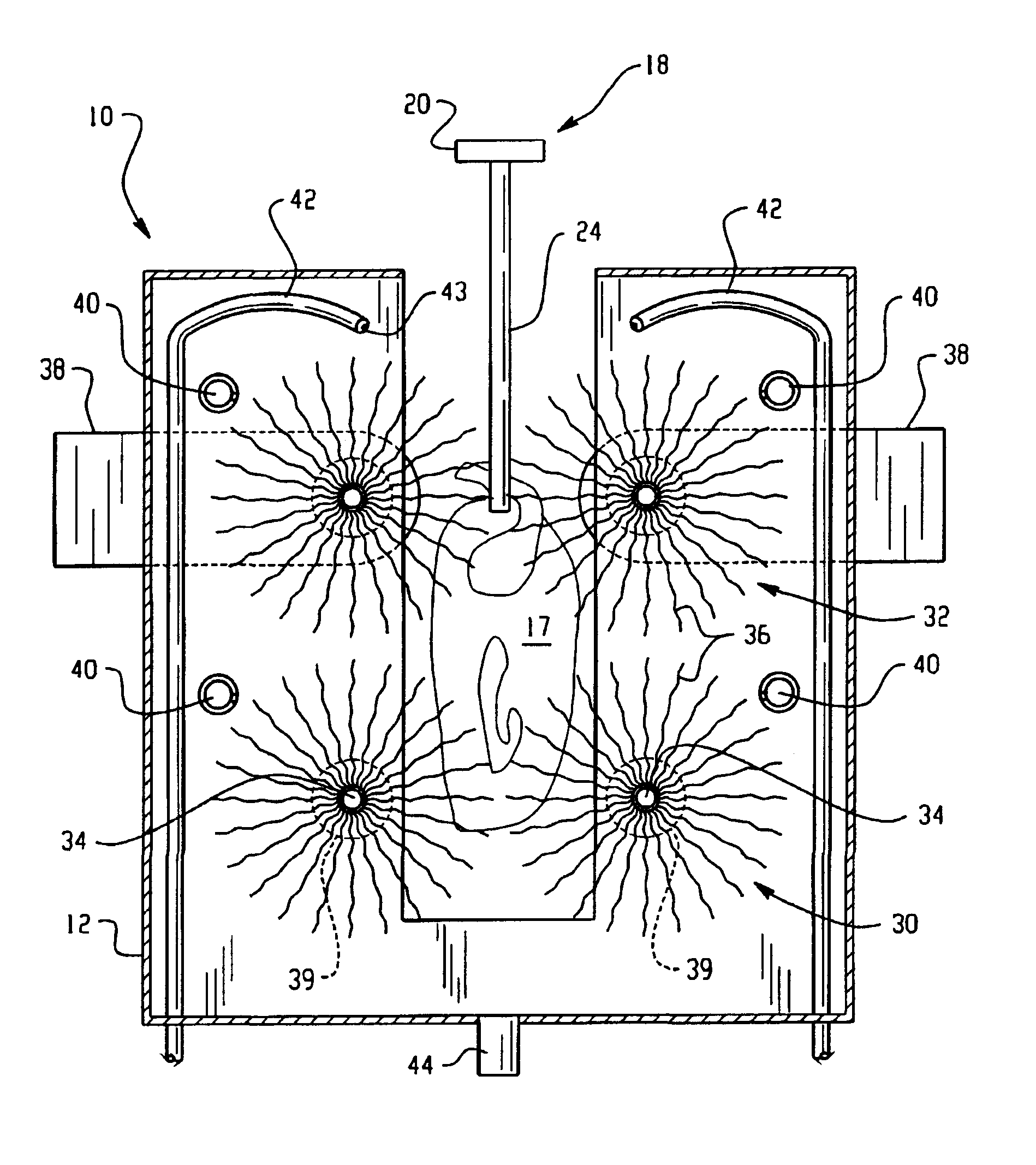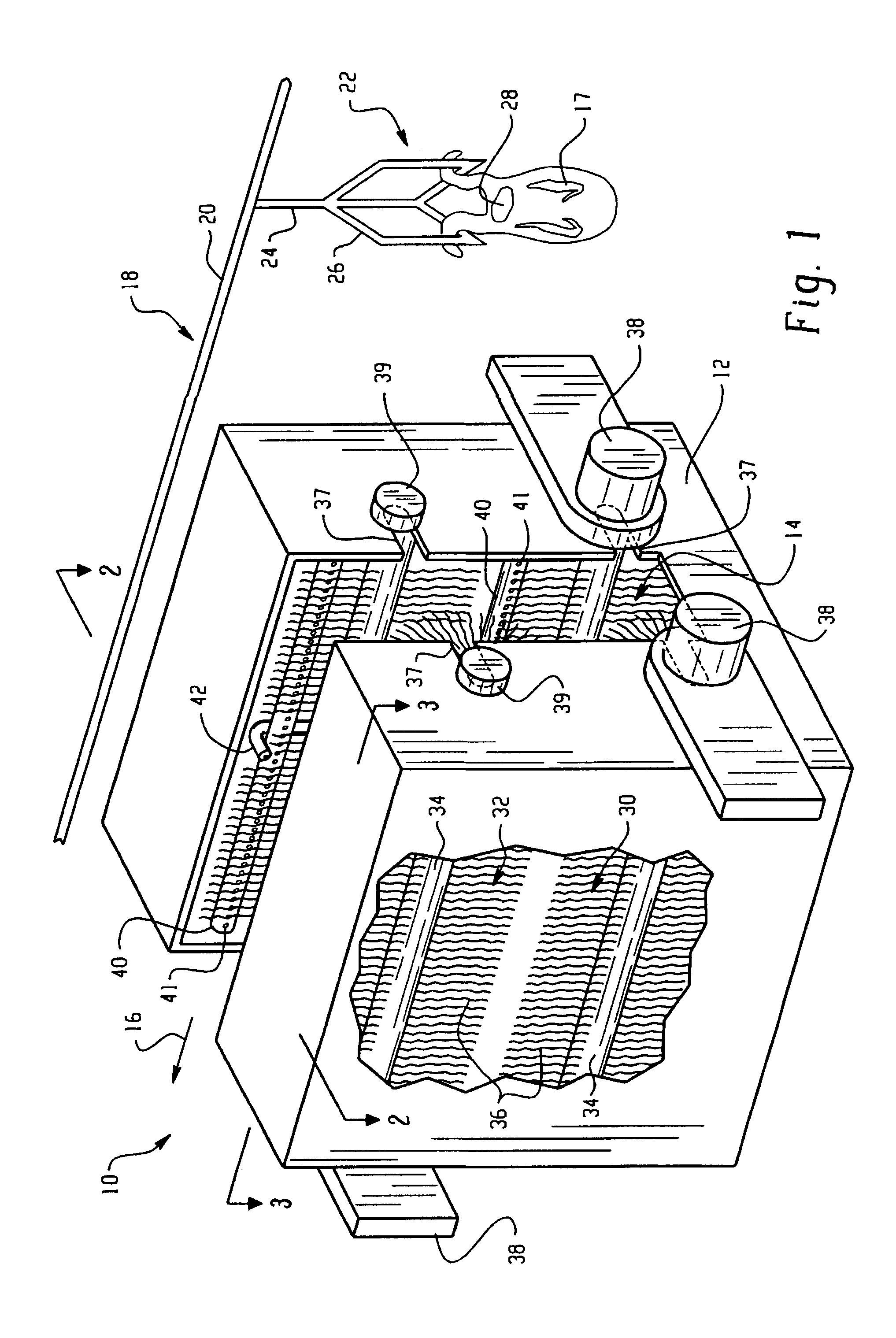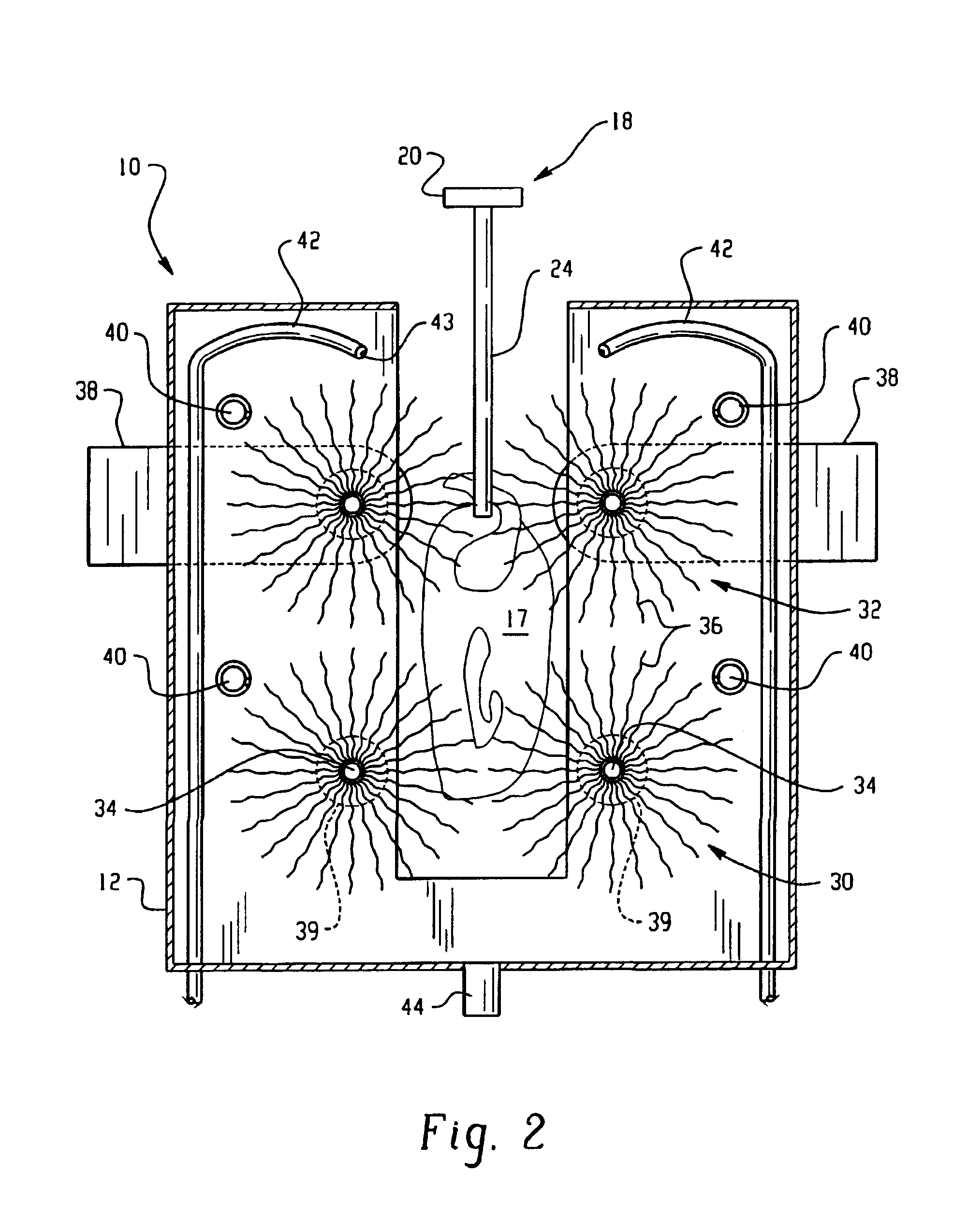Post-evisceration process and apparatus
a post-evisceration and process technology, applied in the field of post-evisceration process and apparatus, can solve the problems of increasing, blood clots, or other pathogen-laden particulates deposited and becoming attached to the carcass, and the current processes are not particularly effective at reducing pathogens, so as to reduce, remove, or retard the bacterial contamination of the animal or bird carcass. , the effect of causing organoleptic deterioration
- Summary
- Abstract
- Description
- Claims
- Application Information
AI Technical Summary
Benefits of technology
Problems solved by technology
Method used
Image
Examples
Embodiment Construction
In this example, poultry carcasses were tested for the presence of salmonella under a variety of conditions. The presence of salmonella were determined for untreated poultry carcasses, poultry carcasses sprayed with trisodium phosphate and poultry carcasses simultaneously sprayed and brushed with trisodium phosphate in the apparatus configured as shown in FIGS. 1-3. The presence of salmonella was determined in accordance with standard USDA-FSIS salmonella post chill culture testing methods. Spraying rates and conditions of the trisodium phosphate were identical for the treated poultry carcasses. Numerous poultry carcasses were tested under each condition and the results averaged. The results are shown in Table 1.
The results clearly show the improvements in the reduction of salmonella levels for poultry carcasses simultaneously sprayed and brushed with an antimicrobial agent. Surprisingly, almost a 50% improvement is obtained upon simultaneous spraying and brushing with the antimicro...
PUM
 Login to View More
Login to View More Abstract
Description
Claims
Application Information
 Login to View More
Login to View More - R&D
- Intellectual Property
- Life Sciences
- Materials
- Tech Scout
- Unparalleled Data Quality
- Higher Quality Content
- 60% Fewer Hallucinations
Browse by: Latest US Patents, China's latest patents, Technical Efficacy Thesaurus, Application Domain, Technology Topic, Popular Technical Reports.
© 2025 PatSnap. All rights reserved.Legal|Privacy policy|Modern Slavery Act Transparency Statement|Sitemap|About US| Contact US: help@patsnap.com



